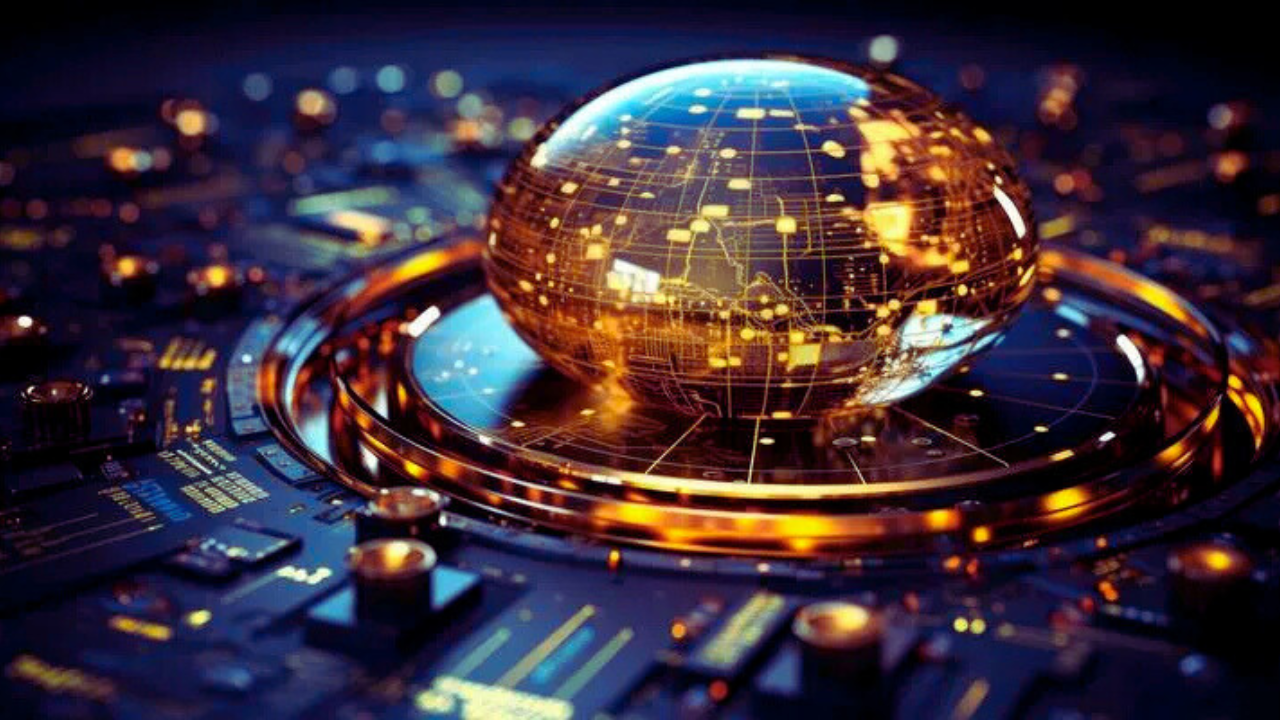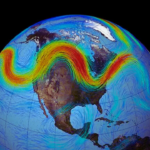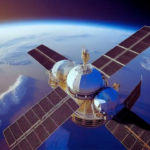Geopolitical boundaries, in 2025, are far more than mere lines on a map; they are the pillars on which international relations are built. These borders define not only where countries begin and end but also regulate how they interact with each other across various domains. Trade agreements, technological exchanges, military alliances, and diplomatic negotiations all hinge on the complex interplay of these boundaries. The ongoing reconfiguration of global power, combined with rapid advancements in technology and communication, makes understanding the shifting boundaries even more important for nations striving for economic growth and global influence.
The growing importance of these boundaries is particularly evident in contemporary geopolitical challenges. Territorial disputes, fueled by both historical grievances and competition for resources, are intensifying in several regions around the world. Nations are also forming and dissolving alliances, reshaping their global influence, which directly impacts everything from security strategies to international trade deals. As nations face issues like climate change, migration, and economic interdependence, the political landscape of 2025 will likely witness a transformation in how borders are both perceived and utilized. Understanding the dynamics at play in these regions will be essential for predicting future global interactions.
What are Geopolitical Boundaries?
Geopolitical boundaries refer to the invisible lines that separate different nations, regions, or territories. These boundaries are defined by political, historical, and cultural factors and are often a result of treaties, wars, or other significant geopolitical events. They can be seen as the result of the negotiation of power between nations or as a reflection of the struggles for territorial control.
In the context of global relations, these boundaries impact not only the physical land but also the interactions between states. The competition for resources, political influence, and military dominance often leads to tensions at these boundaries, which in turn affects trade, security, and international alliances.
- Definition and Scope of Geopolitical Boundaries: Geopolitical boundaries are the invisible lines that demarcate the territorial limits of a country or region. These boundaries define a state’s sovereignty and control over its land, water, airspace, and resources. Geopolitical boundaries are the foundation upon which international relations are built, impacting everything from governance to diplomacy. They are often depicted on maps but go far beyond their physical representation—they determine how states interact and influence global systems. These boundaries can be disputed or fixed, and their significance transcends just geographic locations, influencing the cultural, social, and political systems of the regions they separate.
- Historical Formation and Evolution of Boundaries: Many of the world’s geopolitical boundaries are the result of historical events such as wars, treaties, colonialism, and imperialism. These boundaries were often arbitrarily drawn by colonial powers without consideration for ethnic, cultural, or linguistic divisions, leading to enduring conflicts in many parts of the world. For instance, the boundaries of many African nations were determined during the “Scramble for Africa” in the late 19th century, where European powers divided the continent among themselves with little regard for the indigenous communities. Similarly, the disintegration of former empires, such as the Ottoman and Austro-Hungarian empires, reshaped many borders and created new states with lingering territorial disputes.
- Geopolitical Boundaries and National Sovereignty: One of the most important aspects of geopolitical boundaries is the concept of sovereignty. A country’s sovereignty over its territory grants it the exclusive right to govern its land and make decisions regarding its domestic and foreign policies. This principle is enshrined in international law and is recognized by organizations such as the United Nations. Any violation of these boundaries, whether by external forces or internal rebellion, is often seen as a challenge to a nation’s sovereignty, and may lead to diplomatic or military conflict. Sovereignty over geopolitical boundaries is essential for maintaining national identity, independence, and the ability to enforce laws and policies within the territory.
- Economic Impact of Geopolitical Boundaries: Geopolitical boundaries have a profound impact on the economic interactions between nations. These boundaries determine the flow of goods, services, and capital between countries and are often regulated through trade agreements and customs policies. Trade routes, shipping lanes, and border checkpoints are all influenced by geopolitical boundaries, affecting the efficiency of international trade. Additionally, countries with strategic access to natural resources—such as oil, gas, or rare minerals—may see their geopolitical boundaries become points of contention, as neighboring nations seek access to these valuable resources. The negotiation of boundaries often involves ensuring that economic interests, such as resource control and trade access, are protected.
- Geopolitical Boundaries and Security: Borders are central to a nation’s security and defense strategy. Geopolitical boundaries define the regions a country is responsible for protecting and help prevent external threats from infiltrating the nation’s territory. Historically, the establishment of boundaries has been linked to military control—countries deploy their armed forces along these lines to prevent incursions and to ensure their territorial integrity. Additionally, geopolitical boundaries also determine security arrangements and alliances, such as NATO’s collective defense pact or border agreements between neighboring countries. Any breach of these boundaries can lead to military conflicts or regional instability.
- Cultural, Ethnic, and Religious Divides: Geopolitical boundaries often intersect with cultural, ethnic, and religious groups, sometimes creating tensions between neighboring populations. Many modern-day conflicts are the result of people with different cultural or religious identities being divided by borders that do not reflect their historical or social ties. For example, in countries like India, Pakistan, and Bangladesh, the partition in 1947 divided populations with similar cultural and religious backgrounds into separate nations, creating long-standing issues. Similarly, in the Middle East, the boundaries drawn after World War I placed numerous ethnic and religious groups into newly created states, often leading to clashes. Geopolitical boundaries can therefore play a central role in cultural identity, and the management of these boundaries requires careful consideration of these factors.
Geopolitical Boundaries in 2025: A Changing Landscape
As we step into 2025, the state of geopolitical boundaries continues to evolve. Technology, economic shifts, and climate change have all contributed to a changing landscape in which old borders are being tested, and new borders are emerging. The rise of new powers, the reconfiguration of alliances, and the impact of technological advancements have all played a role in reshaping global relations. One key factor in the changing landscape is the growing influence of emerging economies. Nations like China, India, and Brazil are gaining political and economic power, challenging traditional power structures. These emerging powers often challenge the established geopolitical boundaries, leading to new alliances and sometimes conflicts.
Additionally, environmental changes such as rising sea levels are forcing nations to reconsider their borders. For example, in the Pacific, island nations like the Maldives and Kiribati face the prospect of disappearing due to rising waters. This has prompted discussions about maritime borders and how they should be defined in the face of climate change. Digital transformation is another significant factor influencing geopolitical boundaries in 2025. The internet and digital technologies have blurred the lines between countries in many ways. Cyberspace, as a domain for both economic and military activity, has become a new frontier where the traditional concept of borders is less defined. This shift is not only altering trade but also creating new opportunities and challenges for global diplomacy.
The Influence of Technology on Geopolitical Boundaries
The influence of technology on geopolitical boundaries has become increasingly significant as the world becomes more interconnected. Digital technologies, artificial intelligence (AI), and the growth of the internet have reshaped how countries interact, engage in trade, and secure their borders. These technological advancements have led to new forms of diplomacy, where cyber warfare, digital espionage, and information warfare are becoming central components of geopolitical strategy. Additionally, the ability to communicate and exchange data globally has made physical boundaries less relevant in some instances, as the flow of information and digital trade transcends geographical limits.
Technology will continue to shape geopolitical boundaries in profound ways. AI and big data are enabling nations to monitor borders more effectively and enhance national security through advanced surveillance systems, predictive analytics, and automated border control technologies. Meanwhile, the expansion of the internet has also created “virtual” boundaries, where governments must address cybersecurity threats, manage digital identities, and protect national interests in cyberspace. As technology evolves, the traditional notion of territorial sovereignty may blur, as geopolitical struggles extend into the digital domain, prompting new frameworks for international cooperation and conflict resolution.
Impact of Technology on Geopolitical Boundaries in 2025
| Technology | Impact on Geopolitical Boundaries | Key Implications | Potential Challenges |
| Artificial Intelligence (AI) | AI-driven military technologies may alter defense strategies and alliances. | Enhanced precision in military operations, and autonomous defense systems. | Risk of arms race, AI-powered warfare, and shifting power balances. |
| Blockchain & Cryptocurrencies | Cross-border digital economies challenge traditional financial borders. | Decentralized financial systems, and borderless transactions. | Regulatory challenges, illegal transactions, and financial sovereignty risks. |
| Cybersecurity | National borders are increasingly tested by cyber-attacks and digital warfare. | Increased reliance on digital infrastructure, and cyber espionage. | Rising cybersecurity threats, digital sovereignty, and cyber defense. |
| Space Technology | Space exploration and satellite technology have global implications for territorial sovereignty. | Improved global communication, surveillance, and defense capabilities. | Space militarization, territorial claims in space, and global cooperation. |
| Social Media & Communication | Global communication tools challenge the control of information and public opinion across borders. | Increased influence of social movements, and information warfare. | Misinformation, loss of state control, and foreign influence in domestic politics. |
Global Conflicts and Border Disputes in 2025
geopolitical boundaries will likely remain the site of ongoing conflicts and disputes. With the changing balance of power, territorial claims are becoming more contentious, especially in areas with rich resources or strategic importance. One significant area of tension is the South China Sea, where multiple countries claim territorial rights over islands and sea routes that are crucial for global trade. Similarly, the Arctic region, with its vast untapped resources, is becoming an area of intense geopolitical competition, particularly as ice melts due to climate change, opening up new shipping routes.
The South China Sea Dispute
The South China Sea remains a critical area of geopolitical tension in 2025. Multiple countries, including China, the Philippines, Vietnam, and Malaysia, assert territorial rights over islands and sea routes. These areas are crucial for global trade, as they are key shipping lanes that facilitate a significant portion of world commerce. China’s actions, such as constructing artificial islands, have raised concerns about freedom of navigation and regional security. As global powers like the United States and allies continue to challenge China’s territorial claims, the potential for military conflict or diplomatic standoffs remains high.
The Arctic and Climate Change
Climate change has intensified geopolitical competition in the Arctic, as melting ice opens up new shipping routes and access to vast untapped resources like oil and gas. Nations such as Russia, Canada, and the United States have expanded their military and economic presence in the region to secure strategic advantages. With resource-rich territories now accessible, conflicts over borders in the Arctic are likely to escalate. As nations race to claim rights over newly uncovered areas, international collaboration or confrontation will shape the region’s future in 2025 and beyond.
The Role of Natural Resources in Territorial Disputes
natural resources continue to be at the heart of territorial disputes. Areas rich in resources such as fossil fuels, minerals, and rare earth metals are increasingly seen as critical assets. This drives nations to fortify their territorial claims, especially in regions like the South China Sea and the Arctic. Control over these resources is linked not only to economic growth but also to military power. As competition intensifies, countries will prioritize securing these valuable territories, sometimes at the cost of diplomatic relationships.
technology and Border Security
Advancements in technology have significantly altered how countries approach border security and disputes. In 2025, surveillance technologies, AI-driven defense systems, and satellite monitoring will make it easier for countries to assert their territorial claims and enforce borders. However, technological innovations also present new challenges, such as cyber warfare and digital espionage, which are complicating traditional notions of territorial sovereignty. The convergence of technology and military strategy will continue to play a pivotal role in managing border conflicts around the globe.
Shifting Alliances and Geopolitical Strategy
As border disputes continue to evolve, shifting alliances between countries will increasingly influence how conflicts unfold. In 2025, the formation of new alliances based on mutual interests—such as trade, security, and resource control—will have significant geopolitical ramifications. Countries may find themselves drawn into conflicts due to their allies’ disputes, creating complex webs of support and opposition. These shifting alliances, often influenced by economic interests and strategic military concerns, will make conflict resolution more challenging as geopolitical dynamics shift.
The Impact of Globalization on Territorial Boundaries
Globalization has further blurred the lines of traditional territorial boundaries in some regions. The flow of goods, people, and information across borders has created new challenges for nations attempting to maintain control over their territories. In 2025, the rise of global supply chains, international businesses, and cross-border digital communication will continue to strain the relevance of physical borders. While traditional territorial boundaries still hold significance, the global interconnectedness of economies and societies will complicate the enforcement of these boundaries, requiring new diplomatic and legal approaches to global governance.
The Role of International Organizations in Border Disputes
International organizations, such as the United Nations and the World Trade Organization, will continue to play a critical role in mediating border disputes in 2025. These institutions help facilitate dialogue and provide platforms for conflict resolution, aiming to prevent escalation into violence. However, the effectiveness of these organizations in handling disputes may be limited by national sovereignty concerns and the geopolitical interests of powerful countries. As border disputes evolve, international organizations will need to adapt and find innovative ways to manage tensions, particularly in regions with high strategic or economic value.
The Future of Borderless Digital Spaces
As the digital world expands, the concept of “borderless” spaces will increasingly challenge traditional notions of territoriality. In 2025, cyberspace will become a battleground for geopolitical influence, where nations will compete for control over digital infrastructure and information. Cyberattacks, digital espionage, and the use of social media to influence public opinion will complicate the control of borders in the physical sense. Countries may seek to regulate or restrict online access to safeguard their national interests, creating new digital boundaries that could exacerbate global conflicts. The growing importance of cyberspace will lead to new diplomatic challenges and redefine what it means to control a border in the modern world.
Key Geopolitical Conflicts in 2025
| Conflict Area | Countries Involved | Root Cause of Dispute |
| South China Sea | China, Philippines, Vietnam, Malaysia, Brunei | Territorial and resource claims over strategic maritime routes. |
| Arctic Region | Russia, Canada, Denmark, Norway, US | Competition for control over oil and gas reserves, as well as new shipping lanes. |
| Ukraine and Russia | Russia, Ukraine, NATO allies | Territorial sovereignty and influence over Eastern Europe. |
| Israel-Palestine | Israel, Palestine, Arab States | Disputes over territorial boundaries and political autonomy. |
| Kashmir Region | India, Pakistan, China | Territorial control over disputed lands and security concerns. |
Shaping Global Relations: The Role of Geopolitical Boundaries
geopolitical boundaries will play a central role in shaping the relations between countries. The nature of these relationships will continue to be influenced by factors such as trade agreements, military alliances, and the quest for energy resources. However, the boundaries themselves will remain fluid, as nations redefine their positions in the face of changing global dynamics.
The relationships between superpowers like the United States, China, and Russia will be critical in determining the global balance of power. These nations, while having strong political and military influence, will need to navigate complex interactions with emerging economies, regional powers, and smaller nations in a way that respects territorial boundaries while fostering economic growth and security.
Key Factors Impacting Geopolitical Boundaries in 2025
- Climate Change: The environmental changes brought about by climate change are forcing nations to rethink their geographical boundaries, especially those that involve island nations or coastal regions. Rising sea levels and extreme weather events may create new territorial disputes or lead to the relocation of communities across borders.
- Globalization: The continued process of globalization is diminishing the significance of traditional borders in trade and communication. Countries are increasingly interconnected, and the boundaries that once separated markets and cultures are becoming less relevant in a globalized economy.
- International Treaties: As the geopolitical landscape shifts, new treaties and agreements will be formed to address emerging issues such as cyber security, space exploration, and maritime boundaries. These treaties will help define new boundaries in the digital and physical realms.
- Security Concerns: With the rise of cyber threats, terrorism, and military power projection, nations are reassessing their security needs and adjusting their borders accordingly. Borders are not just physical but are increasingly defined by digital and cyber capabilities.
Wrapping Up
As we move forward into 2025, the significance of geopolitical boundaries in shaping global relations is clearer than ever. These boundaries, which are influenced by political, historical, and economic factors, continue to define how nations interact on the world stage. Although some borders may evolve or shift due to changing power dynamics, their influence on international trade, security, and diplomacy remains a key element of global affairs. In an increasingly interconnected world, these boundaries will have profound implications for cross-border cooperation and conflict resolution.
To navigate the complexities of these evolving relationships, nations must embrace diplomacy, flexibility, and strategic thinking. The geopolitical landscape is becoming more intricate, with new challenges emerging from technological advances, climate change, and shifting alliances. Moving forward, the ability of nations to address these challenges while maintaining stability and fostering peace will be crucial in determining the trajectory of global relations. In a rapidly changing world, understanding the ongoing role of geopolitical boundaries will be essential for managing the future of international cooperation and conflict.
FAQs
How do geopolitical boundaries influence global trade?
Geopolitical boundaries play a crucial role in global trade by determining the routes, resources, and regions a nation can access. They can restrict or open up markets, affect tariffs and trade agreements, and influence the economic stability of nations. Countries with favorable geographic locations or natural resources often have an advantage in global trade.
Are geopolitical boundaries still important in the digital age?
Yes, geopolitical boundaries continue to be important, even in the digital age. While technology has made communication and commerce more global, physical borders still define a nation’s sovereignty and control over its resources. Additionally, cyber borders are emerging, as nations work to protect their digital infrastructure.
What role does climate change play in altering geopolitical boundaries?
Climate change is a significant factor in altering geopolitical boundaries, particularly for island nations and coastal regions. Rising sea levels are threatening the existence of certain countries, forcing them to reassess their territorial claims. Additionally, changing weather patterns and natural disasters are reshaping borders and resource availability.
How do emerging economies challenge traditional geopolitical boundaries?
Emerging economies such as China and India are challenging traditional geopolitical boundaries by asserting themselves as global powers. They are expanding their influence through trade, military presence, and economic partnerships, sometimes clashing with established powers that once dominated the global stage.
How does military power affect geopolitical boundaries?
Military power often dictates how geopolitical boundaries are defined and defended. Nations with strong military forces can expand or defend their territories through conflict or negotiation. In some cases, military interventions have led to changes in borders, either through conquest or peace agreements.
What is the future of borders in the face of globalization?
While globalization is reducing the importance of traditional economic borders, political and cultural boundaries remain crucial. The future may see a more interconnected world where borders are more fluid in terms of trade and communication, but national sovereignty and security will continue to shape how borders are perceived and protected.
What are the key regions to watch for geopolitical changes in 2025?
Key regions to watch in 2025 include the South China Sea, the Arctic, Eastern Europe, and the Middle East. These areas are witnessing intense geopolitical competition and territorial disputes that could significantly impact global relations.








